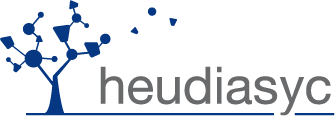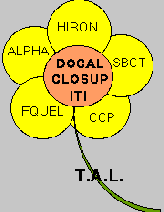Sidebar
Automatic Natural Language Processing (T.A.L.)
Research Team
Philippe Trigano, Sid Lamrous, M.C. Villain, J.P. Deloison, F. Bourcier, A. Fougères,
(the following have also collaborated with the project as part of their doctoral studies: Bénédicte Talon, Chantal Enguehard, Christophe Demko, François de Bertrand de Beuvron, Didier Baltazart, Jean-Christophe Planès, Susan Parker).
Project objective
The project is concerned with the automatic treatment of meta-languages (professional languages) for analysing texts or requests for compliation into natural language, as well as for the generation of information in natural language.
Context
This research has been conducted within the LCS (Language Understanding and Synthesis) section, which was created especially for this subject. We have decided to limit the number of professional languages (meta languages that are particular to specific domains) in order to limit the complexity. The differant aspects of the project are tackled by their own individual sub-projects respectively. These projects are organised using a common approach that is based upon the semantic treatment of knowledge (as opposed to a syntactic approach). The enviroments have been developed, each one with its own base that also complements those of the others: DOCAL (casual and primitive semantics base), CLOSUP (logical environment) and ITI (automatic indexation and automatic extraction of knowledge). The DOCAL environment is used for the profound comprehension of texts. It requires a preceeding study of the corpus text to be analysed, as well as an in-depth modelling of the knowledge contained in the domain. CLOSUP is used to provide interfaces for databases and expert sytems. Finally, ITI is an environment that is particularly well suited to large corpus texts, permitting a comprehension that is shallower than DOCAL, but with the advantage of having a simpler modelling of the linguistic knowledge. In effect, a certain number of automatic knowledge acquisition tools permit considerable time-saving when modelling a domain.
The constituant projects
- DOCAL (Philippe Trigano, Bénédicte Talon) is a project that permits the study and realisation of diverse techniques for the analysis of natural language by use of semantic models that are often derived from psycholinguistic methods. 1988-1993.
- CLOSUP (François de Bertrand de Beuvron) is a project that has illustrated the fact that logic programming can be extended to objects in order to become a helpful tool for natural language processing, especially in the domain of human-computer interfaces for databases. 1989-1992.
- ITI (Philippe Trigano, Jean-Philippe Deloison, Marie-Christine Villain, Kevin Stone) is a project concerned with the automatic extraction of information from textual databases (by means of automatic indexation). This project commenced in 1992.
- FQUEL (Philippe Trigano, Jean-Paul Barthès) concernes the interrogation in 'free' language of databases and expert systems, and tolerates potential user errors. 1986-1989.
- SBCT (Marie-Christine Villain) is a project concerning the interrogation, in natural language, of an expert system possessing a textual knowledge base (thematic encyclopedia). 1992-1996.
- ALPHA (Didier Baltazart) is a study, from a linguistic viewpoint, of the psychology and computation of the problem of polysemic, homonymic, and anarphoric ambiguities and their subsequant automatic processing. 1989-1993.
- CCP (Christophe Demko) is a project that creates, in real-time, conceptaul graphs. The aim of this research was to represent the semantic knowledge that is associated with terms in order to reduce the ambiguities that exist within the lexicon.1989-1992.
- HIRON (Jean-Christophe Planès) is a project that concernes the creation of an analysis and automatic generation of texts system for the monthly situation enquiries of the Banque de France. 1990-1993.
Références
Baltazart D., P. Trigano : “Solution of pronominal reference in the DOCAL environment”, “Applications of Artificial Intelligence X”, SPIE Intelligent Information Systems, Orlando, Florida, USA, 1992.
Bourcier F., M.H.Gréboval, G.Kassel - P.Trigano : “Construction d'une explication et génération en langue naturelle : une étude de cas”, Proceedings of RFIA'94.
de Bertrand de Beuvron F., P. Trigano : “Hierarchically Coded Lexicon with variants”, published in the review International Journal of Pattern Recognition and Artificial Intelligence, due to appear during 1994
Demko C., P. Trigano : “Le plus grand sous-graphe commun de deux graphes : un algorithme pour l'acquisition”, Engineering workshop concerning knowledge and data (A.I.C.D.), Strasbourg, France,, January 1993.
Enguehard C., P. Trigano, P.Malvache: “ANA Automatic Natural Acquisition” , published in the review International Journal of Pattern Recognition and Artificial Intelligence, Vol 7 No.2, April 1993.
Planès JC., P. Trigano : “Semantic Analysis of Economic Surveys”, published in the review Applied Artificial Intelligence, Vol 7, issue 3, September 1993.
Talon B., P.Trigano : “ Enrichissement Automatique à partir de définitions entrées en Langage Naturel” , 10th international one day meeting on expert systems and their applications, Avignon, France, conference specialising on natural language processing and its applications (volume 8), 1991.
Trigano P., P. Morizet, P.Le Beux : “DIALPHIL, a man-machine interface in natural language. Application to an expert system”, 2nd International Expert Systems Conference and Exhibition, London, England, 1986.
Trigano P. : “Qui a peur des fotes d'orthografe (ou de frappe) ? ” , MARI - COGNITIVA , Paris, France, 1987.
Trigano P., J.P.Barthès, F.Vallernaud, C.Gréboval : “Querying an Object Oriented DataBase using Free Language”, published in the review International Journal of Pattern Recognition and Artificial Intelligence 3 (4), USA, 1990. Also published in the book “Advances in AI”, J.Bezdek, Wold Scientific series in Computer Sc, vol 27, Ed Wold Scientific, Singapore 1990.





